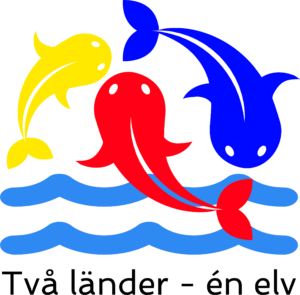Lake Vänern (Swe) and its main tributary R. Femund-/Trysil-/Klarälven have a unique stock of wild, landlocked, large-bodied Atlantic salmon. Earlier the salmon occurred in large numbers in the whole river, up to the outlet of Lake Femunden (No). Due to several powerplants in the river, the salmon stock is now severely reduced in R. Klarälven, and in the Norwegian part there are no salmon at all. As a result, the watercourse does not meet the water framework directive’s requirements for ecological status.
During the project “Two countries – one river” the possibilities of restoring the salmon population, including reestablishment in the Norwegian part of the river has been evaluated and partially started up.
To obtain the goal it is necessary to secure efficient salmon migration up to and down from the spawning areas. This is possible to obtain by building fish ladders, racks to avoid turbine passage and car transport to allow salmon to pass dams and powerplants.
To reestablish salmon in the Norwegian part that has been completely closed for salmon since 1988, gene bank-based cultivation of the salmon to produce and release salmon in the Norwegian part of the watercourse is recommended in an early phase.
Gyrocactylus salaris is present in Lake Vänern, and it is important to avoid spreading this parasite to the Norwegian part of the watercourse. Treatment of salmon with chlorine before transport across the border is suggested as a safe method to eliminate G. salaris.
Large-scale restoration of the remaining spawning and nursery habitat in R. Klarälven has been carried out by returning boulders, stones and gravel, which earlier was taken out of the river to facilitate timber floating. Measures has been taken to improve the salmon genetic status and the project has monitored different life-stages of the population by using electro-fishing-boat, fyke and screwtrap.
The project recommends continuing the work with the ambition to restore the salmon population in the whole river. Costly measures are needed to succeed, and there are still unresolved issues as future license terms for the hydropower plants and a decision whether salmon should be re-established in the Norwegian part of the river. Before starting any measures, these issues must be solved, since the benefit of one measure will depend on the implementation of another.
